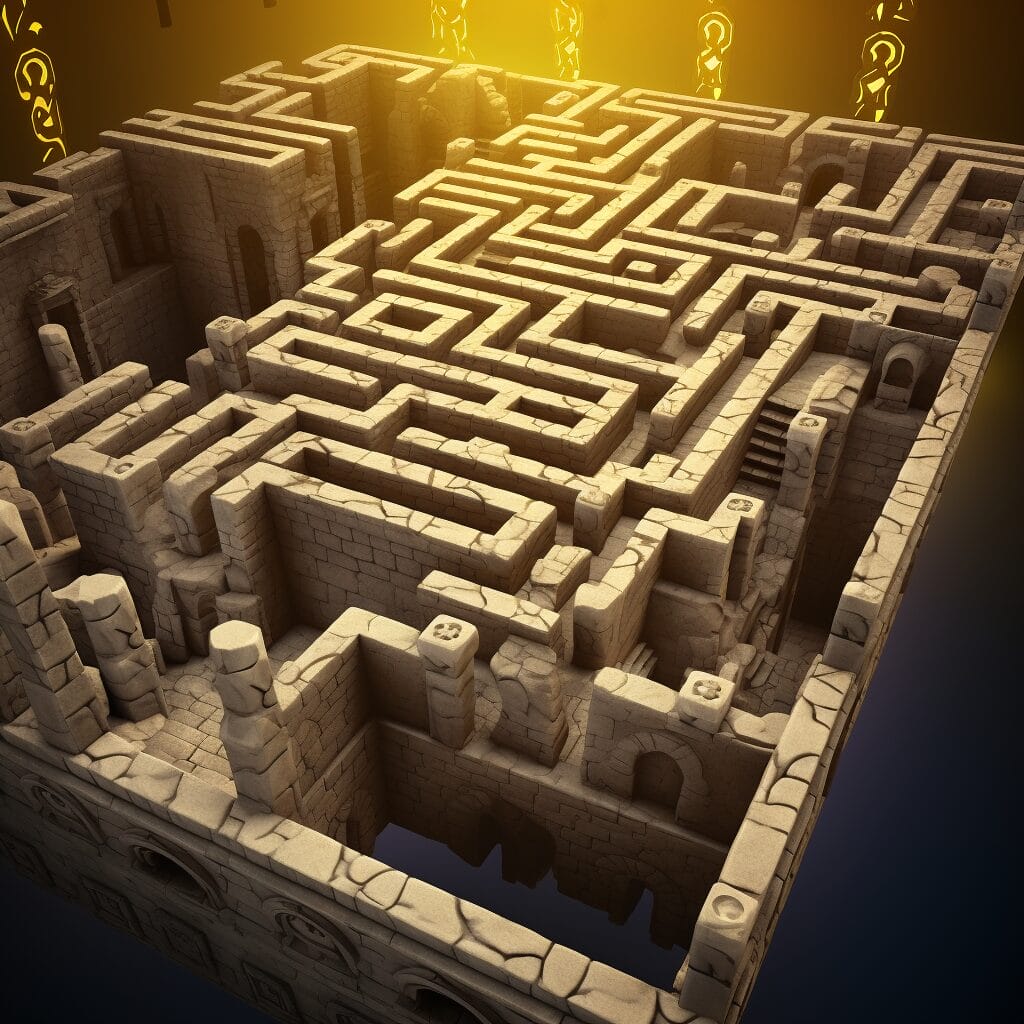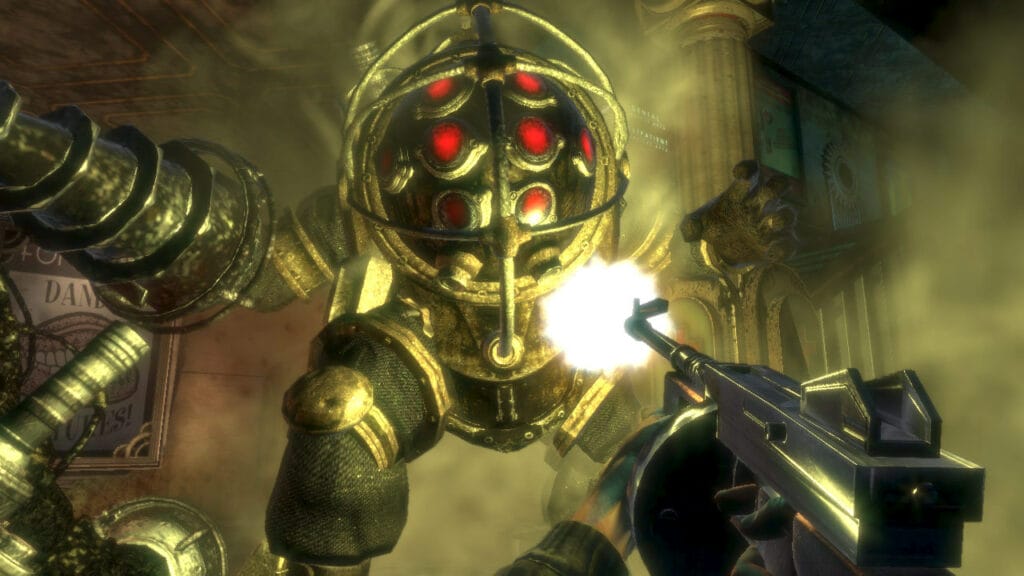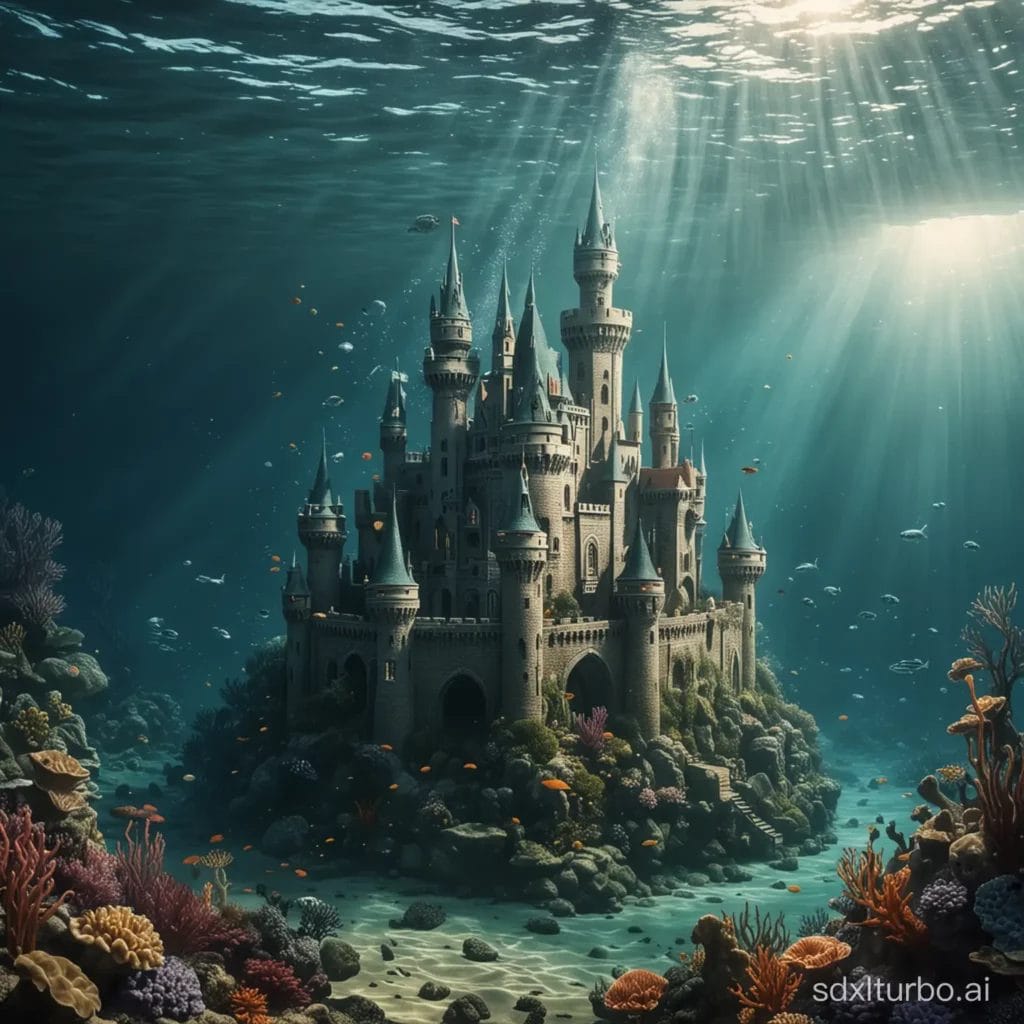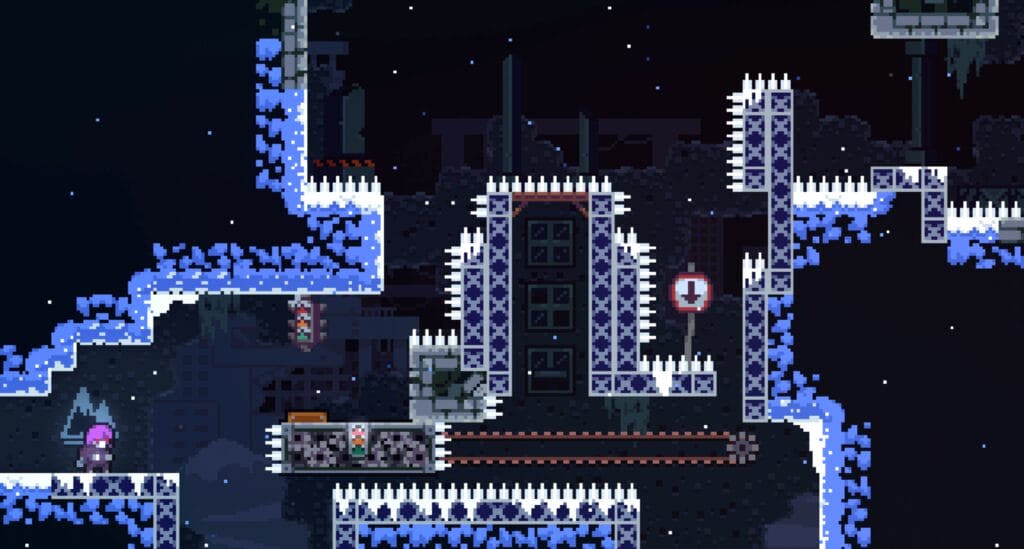Level design is the process of creating the environments in which video games take place. It is a critical part of game development, as it can have a significant impact on the player’s experience. Well-designed levels can be engaging, challenging, and immersive, while poorly designed levels can be frustrating and boring.
In this article, we will discuss the importance of level design in video games. We will explore the different elements of level design, and how they can be used to create a better gaming experience. We will also discuss some of the challenges of level design, and how to overcome them.
We hope that this article will help you to understand the importance of level design, and how it can be used to create great video games.

Contents: The Importance of Level Design in Video Games
What is level design in games?

Level design refers to the creation of video game levels – the spaces, landscapes, and missions that players navigate and complete. Level designers focus on layout, puzzles, placement of objects and enemies, visual elements, lighting, and the overall flow of the level. The goal is crafting levels that are immersive, challenging, intriguing, narratively rich, and most importantly, fun to play.
The level is where all other elements of development coalesce. Gameplay mechanics designed by programmers, art assets created by artists, and music and sound designed by audio engineers all come together in the game world constructed by level designers.
Effective level design requires a blend of creative and technical skills. Designers must have artistic vision to imagine compelling spaces. They need a grasp of game mechanics to design appropriate challenges. They have to employ logic and critical thinking to guide players through environments without confusion. Knowledge of software tools, scripting, and programming empowers designers to bring levels to life. Above all, understanding what makes games enjoyable is crucial.
Level Design vs Game Design
While often used interchangeably, level design and game design are distinct disciplines that work together to create a game.
Game design refers to designing the overall vision and core mechanics of the game. Game designers establish fundamental elements like story, gameplay, rules, mechanics, progression systems, and intended emotional experience.
Level design focuses on realizing gameplay within specific environments and spaces. Level designers take the mechanics and systems designed by game designers and craft engaging challenges and scenarios using them.
Think of game design as devising the pieces and rules of a board game while level design strategically arranges those pieces into a playable board.
| Game Design | Level Design |
|---|---|
| Defines core mechanics and systems | Implements mechanics within game spaces |
| Establishes overall game vision and goals | Focuses on moment-to-moment gameplay |
| Crafts progression and difficulty curves | Controls pacing through challenges |
| Devises story, settings, characters | Brings settings to life through environments |
| Determines win conditions and loss states | Guides player to goals using space design |
| Pitch documents and prototypes mechanics | Whiteboxes and iterates level layouts |
The roles overlap. Level designers prototype mechanics and game designers consider pacing. But the division of focus remains – game design formulates big picture vision while level design actualizes it through gameplay spaces.
Both disciplines employ critical thinking, game knowledge, creativity and iteration. But level design relies more on spatial design skills while game design needs systemic thinking. They work in tandem to craft cohesive, polished games.
The History of Level Design
Early arcade and console games featured simple level design, limited by primitive technology and storage. Classic games like Pong and Space Invaders had unchanging backdrops. But games still managed engaging play through difficulty curves and enemy patterns despite technological restrictions.
The shift to 2D side scrolling games allowed for greater variety. Super Mario Bros. on NES took advantage with diverse themes including above ground, underground, underwater, and castle levels. But players still moved exclusively left to right, and levels scrolled automatically.
The move to 3D games dramatically expanded level design possibilities. Super Mario 64 let players fully explore 3D worlds with 360 degree freedom. Games could now have true persistent worlds rather than isolated stages. Landmark PC first person shooters like Doom and Half-Life demonstrated the atmospheric potential of 3D game environments.
Consoles and PCs rapidly gained processing power while storage grew, allowing modern games to feature breathtakingly detailed levels. Engines like Unreal enabled developers to create sprawling 3D worlds. Level design skills became even more crucial with near limitless possibilities.
Best level design in video games / Notable Examples of Great Level Design
While principles guide level design, nothing exemplifies it like experiencing memorable game environments firsthand. Below are some standout cases of superb level design.
Super Mario 64 (1996)

This pioneering 3D platformer featured sprawling sandbox levels with objectives. Designer Shigeru Miyamoto crafted self-contained worlds with diverse themes, from haunted houses to sandy deserts. Each level combined platforming challenges, puzzles, and discovery in innovative ways. The shifting and tilting environments showed off the new dynamic 3D capabilities.
Half-Life (1998)

Valve’s groundbreaking FPS had seamless levels blending combat, puzzles, and story. The intro tram ride demonstrated environmental storytelling through details like scientist chatter and equipment. Scenes shifted naturally using transitions like elevators. Levels like the dam walk and Resonance Cascade created unforgettable dramatic moments through design.
BioShock (2007)

Set in the fallen underwater city of Rapture, BioShock’s levels created an unsettling retro-futuristic atmosphere. Environmental storytelling revealed Rapture’s tragic history completely through level details. Areas like the eerie medical pavilion and hedonistic Fort Frolic remained thematically consistent while offering diverse challenges.
The Legend of Zelda: Breath of the Wild (2017)

Nintendo broke conventions with a massive open world level. Environments contained dozens of intricately designed mini puzzles and encounters organically. Players could approach areas and challenges in any order, enabled by the physics system and nonlinear design. It set a new benchmark for world design.
God of War (2018)

This PS4 entry opted for continuous one-shot style levels rather than discreet rooms. The camera moved seamlessly through intricate environments filled with story details. Epic moments like the opening troll battle and scaling the World Tree showed design focused on cinematic immersion. The fluid ever-present levels made it feel like a complete journey.
These games used smart level design choices to craft memorable experiences and push boundaries of immersion. Their standout levels served gameplay while creating emotional resonant worlds that stuck with players. They exemplify masterful design transcending technology.
Principles of Effective Level Design
While technology empowers endless possibilities, certain principles and concepts constitute effective level design in any era.

Immersion
Great levels pull players into the game world. Every element – layout, art, lighting, sound, etc. – must create an immersive environment where players become absorbed.
Suspension of disbelief is critical. Players must feel they have stepped into a believable place with its own history and purpose, not an artificial construct existing solely for their gameplay. Environments should have reasonable realism and react logically.
Dynamic elements that give the illusion of life also build immersion. Things like wildlife, weather effects, and environment destruction make a level feel real.
Strong aesthetic design choices augment immersion. A horror level for example should have dim moody lighting, gothic architecture, and unsettling ambient noises. Every design decision must build the believability of that world.
Challenge
Video games are fundamentally about overcoming challenges. Levels test a player’s skill through obstacles like enemies, traps, puzzles, and hurdles requiring mastery of mechanics.
The distribution of challenges influences difficulty and pacing. Early sections should ease players in with moderate threats. Challenges can escalate to peak in climatic late levels or boss fights.
Good level challenges are difficult but fair. Players should be able to observe dangers and strategize solutions with careful play. Ideally, challenge builds game mastery over time rather than frustrating players.
Advanced challenges encourage players to combine and master mechanics. For example, a player may need to activate platforms while dodging hazards to reach a goal. Multi-stage boss battles often integrate multiple mechanics.
Challenge variety prevents repetitive boredom. Mixing puzzles, traps, different environments, and distinct enemies keeps players engaged. Challenges tied to level themes also enhance immersion.
Guidance
Levels must guide players through challenges and environments without confusion. Too much openness and ambiguity can frustrate players, while excessive linearity creates boredom.
Strong environmental design directs player navigation and focuses action. Landmarks orient players while areas like dead ends or drops offs limit options. Lines of sight guide players toward threats or objectives.
Lighting draws player attention toward interactive objects and away from irrelevant scenery. Glowing or pulsating elements indicate interactivity.
Negative space discourages progress in certain directions, like open areas with distant enemies. Danger cues like sound effects, damage floors, and enemy designs prompt caution.
Designers balance linear progression with some openness for exploration. Branching paths, side areas, and secrets reward curiosity while preventing confusion.
Storytelling
Level design can tell story through environment, atmosphere, objects, and events. Players observantly traversing a world can piece together a narrative completely through level details.
Environments reflect story events. For example, a war-torn level may contain destroyed buildings, abandoned vehicles, collapsed bridges, and battlefield detritus. Players visually learn story details.
Objects and documents expand story information. Notes, diaries, experimental equipment, and other interactive objects fill out back story and world building.
Environmental storytelling draws players into investigation while allowing self-pacing. Players feel greater agency inferring narratives by exploring than through cutscenes and dialog.
Story events can unfold through levels. Player triggered events like activating a bridge or ending a storm alter the level to indicate narrative progression.
Pacing
Level design controls game pacing by managing highs and lows in intensity. Effective pacing provides peaks and valleys rather than constant blandness or exhaustion.
Rising and falling action creates dynamic pacing. Easing into levels establishes context, while closing with high intensity gameplay brings climax.
Strategic placement and quantity of enemies affects pacing. Too many contiguous enemies creates exhaustion while sparse enemies bore players. Alternating enemy dense areas with puzzles or traversal varies gameplay.
Safe areas allow players to regroup after intense sections before ramping up action again. Saves, ammo caches, health packs or puzzle solving zones provide dynamic pacing through breaks.
Open exploration areas offer players agency to decide when to engage foes versus pacing themselves. Alternating open areas with linear sections also varies pacing.
Good pacing keeps players engaged through highs and lows rather than burning out. Levels should close on climactic notes and build excitement for what follows.

The Impact of Level Design or why level design is important
Level design is central to the player experience. While things like graphics and game mechanics drive technology and marketing, levels provide the fun factor determining true game success.
Poor level design cripples otherwise competent games. For example, bland repetitive environments diminish immersion. Frustrating enemy placements and lack of direction sap enjoyment from even fun mechanics. Completely open worlds may boast intricately detailed environments, but still fail to engage players.
Great level design makes good games into game of the year contenders. Hit games like Elden Ring show that compelling worlds with intricate level design can become cultural phenomena. Memorable levels like Silent Hill 2’s haunted hotel or Resident Evil’s Spencer Mansion linger for decades.
Games reliant on narrative like The Last of Us allow level design to elevate stories to new heights of poignancy. Some competitive multiplayer shooters depend entirely on map design to succeed. Strong level design brings concepts together in playable, exhilarating experiences.
Stages of Level Game Design / Level Design Process in Game Development
Designing excellent levels requires immense skill, effort, and iteration. Making enjoyable spaces within technical constraints takes creativity and problem solving. As games grow more complex spanning open worlds, level design becomes even more challenging.

Level design is an iterative process requiring prototyping, feedback, and refinement. Even after launch, player data and updates may lead to reworking levels. The ability to analyze and refine based on testing is crucial to great design.

Level Progression and Game World
Well-designed games feature levels that progress logically in difficulty and tie together into a believable world.
Difficulty Progression
Levels should escalate in challenge as the player’s skills grow. Each level builds on mechanics introduced earlier and tests them in new ways. Difficulty can ramp up through more complex spaces, obstacles, and enemy combinations. Bosses provide climax challenges.
Mechanical Progression
New mechanics can be introduced across levels to add variety and depth over the course of the game. Tutorial levels teach core mechanics, while later levels combine them in advanced ways.
Narrative Progression
Story and themes can unfold across levels. New characters and plot points are introduced while settings reflect story progression. The final levels bring narrative arcs to a climax.
Interconnectivity
Levels should logically connect to form cohesive game worlds through transitions like hallways, roads, or portals. Consistent style and mechanics across levels make individual levels feel part of a whole.
Fast Travel Systems
Games with vast worlds use fast travel systems between zones. This providesNonlinear access while keeping the world connected. Memorable hubs like cities also link levels.
Sequencing levels strategically enhances progression and world building. Smooth transitions and cumulative mastery across a varied but unified game world creates great player journeys.

The Role of level Designer
The role of a level designer is to construct engaging spaces and scenarios for gameplay using the mechanics and assets provided by the rest of the development team.
Level designers architect the game world that brings the overall vision to life. Key responsibilities include conceptualizing level layouts, planning gameplay pacing and challenges, iterating based on playtesting feedback, placing interactive objects and enemies, scripting behaviors, guiding player navigation, establishing mood through visuals and audio, and ensuring technical performance.
It is a role that balances creative design sensibilities with analytical considerations around mechanics and player psychology. The expertise of level designers in shaping enjoyable gameplay spaces makes them invaluable to development teams. Their work defines the interactive experiences that players will ultimately enjoy.
Game Engines and Tools for Level Design
Level designers rely on game engines and design tools to bring their ideas to life.
Game Engines
Game engines like Unity, Unreal Engine, CryEngine, and Godot provide the core framework and editors for building levels. Their modular tools allow assembling gameplay spaces rapidly by composing 3D assets, coding behaviors, and crafting visuals. Engines handle rendering, physics, scripts, and optimization so designers focus on creation.
Level Editors
Specialized level editors offered by game engines facilitate spatial design, terrain sculpting, asset placement, and scripting interactivity. Unreal Editor, Unity Editor, Radiant Editor for idTech, and Forge for Halo provide intuitive 3D editing tools optimized for level creation.
3D Modeling Software
Programs like Maya, 3ds Max, and Blender allow designers to create and animate complex 3D assets including architecture, props, and scenery for populating levels.
Terrain Editors
Tools like World Machine and Gaea generate terrain heightmaps which can be imported into game engines. They allow for realistic natural landforms like mountains and rivers.
Scripting
Scripting gives designers control over gameplay behaviors without coding entire systems. Visual scripting tools like Blueprint in Unreal and Finite State Machines in Unity enable interactive logic.
Asset Stores
Online asset stores offer 3D models, textures, visual effects, and modules for purchase or subscription, enabling designers to quickly build quality levels with off-the-shelf components.
Powerful, accessible tools catered to level creation empower designers to build stunning worlds limited only by their imagination. The right tools can enhance workflow, creativity, and innovation in level design.

Game level design Tips and best practices for an effective video game level
Great level design is challenging but immensely rewarding. Following design principles and best practices helps craft amazing gameplay spaces that stick with players.
Key factors to consider in game level design
By considering factors like these during the design process, level creators can craft truly holistic experiences that excel across all fronts.
Level Design Trends and Innovation
As gaming technology evolves, level design continues to innovate. Designers find new ways to immerse players, enable creativity, and expand possibilities.
Procedural Generation
Procedural generation leverages algorithms to construct levels programmatically rather than manually. It massively expands potential scope while adding unpredictability. Games like Minecraft, No Man’s Sky, and Rogue Legacy create expansive worlds from code.
Open Worlds
Rather than discrete levels, games build vast open worlds for exploration. Grand Theft Auto, Skyrim, Red Dead Redemption, and other franchises give players tremendous freedom. Excellent world design retains many level principles like pacing, progression, and discovery.
Community Creation
Level editors empower players to build and share custom levels. Games like Mario Maker, Far Cry, and Roblox enable endless content from player creativity. Level design tools allow players to become designers.
Environmental Storytelling
As virtual worlds become more detailed, environmental designs can silently convey deep narratives. Levels like in Bioshock, Firewatch, and What Remains of Edith Finch tell stories intrinsically through scenery and objects without overt exposition.
Emergence
Sophisticated AI and simulation enable enemies and systems to interact in unpredictable ways. Rather than tightly scripted levels, emergent gameplay creates dynamic stories from basic rules and AI. Games like Left 4 Dead, Dwarf Fortress, and Dead Rising leverage emergence.
The Future
Beyond technological shifts, level design will continue focusing on psychology – understanding what compels players mentally and emotionally. As VR and AR take hold, spaces may move from screens to real projected environments. With endless possibility, the unifying challenge is using it to forge powerful game experiences.
Game Level References
The Level Design book

Level Design Processes and Challenges: A Cross Section of Game Development
What is Video Game Level Design? A very brief introduction
Conclusion
Level design sits at the heart of memorable games. A great idea executed poorly results in a bad game. But solid mechanics placed in an awesome world tuned for maximum fun triumph. Levels allow creativity to flourish and innovation to astound. Players crave worlds that thrill the imagination.
That desire begins with the skills of talented level designers. Their craft transforms concepts into the experiences that define pop culture. Their digital worlds become the playgrounds of entire generations. That power to shape interactive joy through level design shows no signs of abating as technology enables ever greater possibilities.
By studying principles of effective level construction, developers ensure that ideas receive their ideal showcase. For those who want their games to ascend from good to legendary, the lesson is clear – build your dreams on a foundation of excellent level design.
FAQ The Importance of Game Level Design in Video Games
Q: What is video game level design?
A: Video game level design refers to the process of creating the environments, challenges, and overall layout of a game’s levels or stages. It involves designing the spaces, obstacles, and objectives that players will encounter as they progress through the game.
Q: Why is video game level design important?
A: Video game level design is important because it directly impacts the gaming experience. Well-designed levels can enhance the player’s immersion, provide compelling challenges, and create a sense of progression and satisfaction. It plays a crucial role in shaping the overall gameplay and enjoyment of a video game.
Q: What is the role of level design in the game development process?
A: Level design is an integral part of the game development process. It involves collaborating with game designers, artists, and programmers to create the environments, structures, and gameplay mechanics that make up a level. It requires careful planning, iteration, and balancing to ensure a cohesive and engaging experience for players.
Q: What are some key aspects of game level design?
A: Some key aspects of game level design include environment design, enemy placement, puzzle creation, platforming mechanics, item placement, and level progression. These elements work together to create a challenging and enjoyable experience for players.
Q: How does level design impact the overall experience of a video game?
A: Level design has a significant impact on the overall experience of a video game. Well-designed levels can create a sense of immersion, provide interesting challenges, and reward players for their progress. On the other hand, poorly designed levels can frustrate players, disrupt the flow of gameplay, and negatively affect the overall enjoyment of the game.
Q: What is a design document in the context of game-level design?
A: A design document is a detailed plan or blueprint that outlines the vision, mechanics, and objectives of a game’s levels. It serves as a reference for the development team and ensures that everyone is on the same page when it comes to designing and implementing the game’s levels.
Q: How does level design differ based on the type of game?
A: Level design varies depending on the type of game. In a platforming game, the level design may focus on precise jumps and fluid movement. In a puzzle game, the level design may involve creating intricate puzzles and challenges. Each type of game requires specific considerations and mechanics to create engaging levels.
Q: What role do graphics and environment design play in level design?
A: Graphics and environment design are essential aspects of level design. They contribute to the overall atmosphere, immersion, and visual appeal of the game. Well-designed graphics and environments can enhance the player’s experience and make the game world feel more believable and engaging.
Q: Who is responsible for designing the levels in a video game?
A: The responsibility of designing the levels in a video game usually falls on the game developers or level designers. They work closely with other members of the development team, such as artists and programmers, to bring the game’s vision to life through well-crafted and engaging levels.
Q: What are some important elements of game level design?
A: Some important elements of game level design include pacing, variety, balance, player feedback, and the integration of story or narrative elements. These elements contribute to creating a well-rounded and enjoyable gameplay experience for players.






















